
Social Media & Content Manager

Audiology Expert
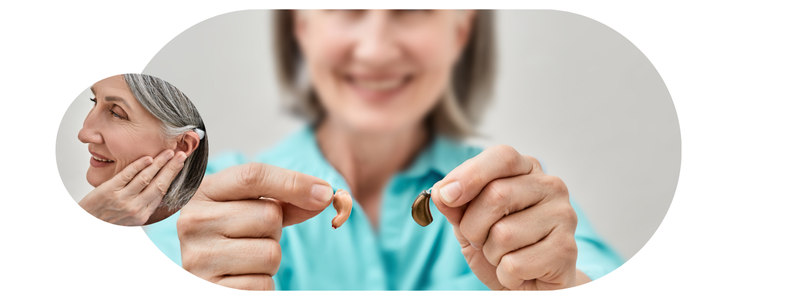
Researching Hearing Aid Brands?
What are the best hearing aid brands available in the UK?
Last Hearing Aid UK Update:
We offer different types of hearing aid brands
As an independent supplier of leading hearing aid brands, we are in a unique position to support, advise and put you in touch with the right audiologist locally who can improve your hearing if your hearing test indicates a hearing loss.
We have access to all the main hearing aid brands in the industry. Unlike some of our competitors, we are not affiliated with any hearing aid brands.
We can offer our customers a limitless choice of hearing aids, and along with your preferences, we can assist you in making the right device for your lifestyle, hearing loss, and much more.
In regard to hearing aid brands, it all starts with research
We understand how challenging it can be to find a hearing aid, especially if you've never worn a hearing aid or even if you have and are looking to upgrade.
Before you embark on this journey, it is important for you to spend some time researching hearing loss, your local audiologist, hearing care services, the different hearing aids available and familiarising yourself with the hearing aid brands in the industry.
But what are the best hearing aid brands? What is the hearing aid brand's history? What are the Danish hearing aid brands? Which ones are the Demant hearing aid brands? Let's take a look...
Comparison of hearing aid brands
On this page, we focus on the main digital hearing aid brands in the audiology industry, a little bit about their history, the technology they provide and how they compare to each other.
You may be wondering why researching hearing aid brands is an important part of your hearing loss journey and hearing aid process.
The simple answer to this is that each hearing aid brand displays technical innovation in different ways.
What one hearing aid brand has to offer in terms of technology, style, hearing experience, connectivity, and features might not include the right hearing aid for you and your hearing loss.
The importance of researching hearing aid brands
When researching hearing aids, looking at both the hearing aid brand and the devices they offer is crucial to narrowing down the list of potential hearing solutions.
However, after your hearing test, your audiologist will look at the results from your audiogram and advise which hearing aids will benefit you the most.
This will be determined by the level of hearing loss, amplification needed, your lifestyle, expectations, connectivity required and what features you might need.

Hearing aid brands comparison
Comparing the main hearing aid brands available
Here are the types of hearing aid brands in the industry:
- Phonak
- Oticon
- Resound
- Widex
- Signia (formerly known as Siemens)
- Bernafon
- Starkey
- Unitron
- Audio Service
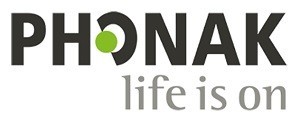
Hearing aid brands Phonak
This hearing aid brand was founded in Switzerland in 1947 and belongs to the Sonova Group, which also owns Unitron.
Another interesting fact - Sonova also owns the majority shareholding of Boots Hearingcare. Currently, Phonak is the biggest manufacturer of hearing aids worldwide.
Phonak's company mission has always been to create hearing devices that improve the quality of life and reduce the limitations of hearing loss. Phonak prides itself in offering innovation, a variety of models, styles and advanced hearing aids for children.
Therefore, offering a choice of makes and models for all ages, all levels of hearing loss and individual preferences.
Phonak is also the first hearing aid brand to launch the world's first Bluetooth streaming hearing aid from any Bluetooth device directly, without the need for a go-between streamer accessory. Previously, it was only iPhone users who could access this connectivity.
Praise was given to Phonak for this, as over 80% of the world owns Android smartphones. Therefore, those with hearing loss who had an Android phone missed out on this beneficial connectivity.

Phonak's main hearing aid technology features:
- Binaural Voicestream: Bi-directional audio streaming in real-time. Allowing hearing aid wearers to concentrate on one voice. Ensuring less noise and improved speech understanding in challenging environments.
- AutoSense OS: Assists environment transitions - Adjusting volume, program and noise reduction according to your soundscape.
- SoundRecover: Receiving and reducing the frequency of high-frequency sounds. This is particularly beneficial to those with a high level of hearing loss, as older hearing aid models couldn't help sound clarity even when the volume was turned up on the devices.
Phonak's hearing aid technology levels
The hearing aid technology levels are named 90, 70, 50 and 30. The higher the number, the higher the technology level and the more expensive the model.
Understanding Phonak models
Each model in each Phonak range has a different name. These are Nano (invisible in the ear), Virto (in the ear), Audeo (tiny behind the ear), Bolero (behind the ear) and Naida (the power behind the ear).
Interesting Phonak hearing aid brand facts:
- Roughly 3 Phonak hearing aids are fitted every minute.
- Phonak is represented in over 100 countries.
- They have over 45 years of pediatric experience.
- They collaborate with 20,000 audiology professionals in all their research projects.
![]()
Hearing aid brands Oticon
This hearing aid brand is owned by Danish company Demant A/S, which also owns Bernafon and hearing aid retailer Hidden Hearing.
Oticon is one of the world's leaders in hearing aid innovation and was founded in 1904 by one man's dedication to improving his wife's hearing loss.
Ever since then, their motto has always been 'people first'. Their most praised hearing aid would be the Opn S, which builds on the already brilliant model, the Opn.
![]()
Oticon's main hearing aid technology features
- Velox Processing Platform: Providing 50x faster data processing that's needed to make sense of changing conversations in public places. Balancing voice sources and taking away the noise between the words you want to focus on.
- BrainHearing Technology: 360-degree sound scanning that improves how the brain processes the sound you hear in real time. Therefore, it helps the ear send healthier sounds to the brain.
- Oticon ON App: Allows connectivity with the 'internet of things' with your hearing aids and your light, alarm and thermostat controls.
Oticon hearing aid technology levels
The technical specification for each range is labelled as 1, 2 and 3 - with 1 being the highest level.
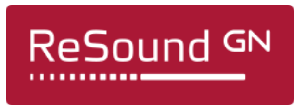
Hearing aid brands Resound
This Danish hearing aid brand is part of the GN Group (Great Nordic), which used to trade as GN Resound. They were the original innovators of the first open-fitting hearing aids and 'made for iPhone' hearing aids.
Resound has consistently led the industry in terms of technology, which is mainly due to its having over 147 years of experience in the audiology world.
Their main focus continues to bring consumers a natural and realistic experience, along with the connectivity that is expected in this modern, fast-paced world.

Resound's main hearing aid technology features
- Binaural Directionality III: An ear-to-ear connection that ensures a better-balanced sound for the device wearer.
- Tinnitus Technology: A large percentage of those with hearing loss have some degree of tinnitus. Resound tends to include a collection of tinnitus sounds, helping to manage symptoms.
- Resound Assist: This enables you to adjust your hearing aid settings and receive updates using your Smart 3D app on your smartphone.
Resound's hearing aid technology levels
This hearing aid brand has six technology levels. These are 9, 7, 5, 4, 3 and 2. The higher the number, the greater the technology.

Hearing aid brands Widex
Widex is a Danish hearing aid brand founded in 1956 by Christian Topholm and Erik Westermann as a family business. In 2019, they merged with Sivantos, and together they are known as WS Audiology.
However, they still remain separate, as both manufacturers have different philosophies and offer unique products to consumers.
They remain one of the industry's leaders in hearing aid innovation and now manufacture hearing aids in over 100 countries.
Widex's main focus is on providing those with hearing loss the ability to differentiate between background noise and conversation easily, in all challenging environments.
Interesting facts about the Widex hearing aid brand
- In 1995, they created the first digital ITE hearing aid.
- In 2008, they launched the smallest RIC hearing aid.
- In 2010, they launched the first hearing aid specifically designed for babies.
- In 2018, they designed the first hearing aid that used machine learning.
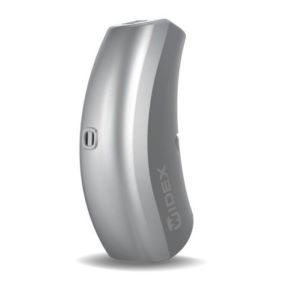
Widex's main hearing aid technology features
- Machine Learning: Enabling you to access a form of artificial intelligence that analyses information and experience of common environments.
Therefore, hearing aids make improvements to how you hear sounds in various hearing situations, which is based on the adjustments you have made in the past.
- Fluid Sound Analyser: Gain from automatic adjustments in response to challenging soundscapes. Such things as distinguishing between speech and surrounding sounds more fluidly.
- Z-Power Rechargeability: Widex uses the largest energy capacity of 312 batteries. These perform 20% better than other rechargeable versions.
Widex's hearing aid technology levels
Widex labels their hearing aid technology levels as 440, 330, 220 and 110. 440 being the highest technical specification.
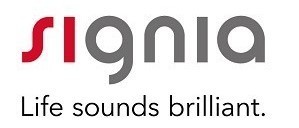
Hearing aid brands Signia
Signia's hearing aid brand legacy started as Siemens in 1978 by Werner Von Siemens. He designed an enhanced telephone receiver for people who have hearing loss to better understand conversations on the phone.
Siemens was purchased by the Sivanto Group in 2015 and chose to rebrand Siemens as Signia. Before this, Siemens was renowned for making average hearing aids, but now, with this collaboration, they are creating better hearing aids and more advanced technology for their consumers.
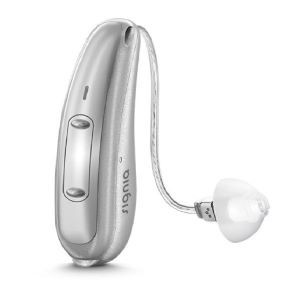
Signia's main hearing aid technology features
- Own Voice Processing (OVP): Enabling the wearer to reproduce the most natural-sounding own voice when hearing aids are worn.
- TwinPhone: The hearing aids will stream phone conversations in both ears, allowing for a better hearing experience when using the phone.
- HD Music: An advanced technology that adapts your hearing aid's configurations to different musical soundscapes.
Signia's hearing aid technology levels
Signia's technology levels in all their ranges are named 7, 5 and 3, 7 being the greatest technology.

Hearing aid brands Bernafon
Bernafon was founded by Hans Gfeller in Switzerland in 1946. This hearing aid brand is currently sold in 70 countries worldwide and is a part of the Demant Group, which also owns hearing aid brands Oticon and Sonic.
Their hearing devices are famous for providing natural sound to the wearer without great expense.
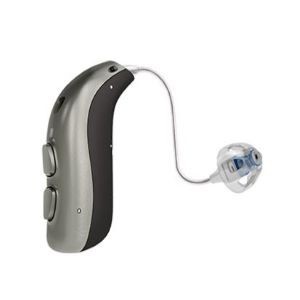
Bernafon's main hearing aid technology features
- DECS: This technology ensures that the wearer always hears better. Changing listening settings and giving more control to the wearer, quicker and easier than ever before.
- Dynamic Feedback Canceller: Their fastest-ever feedback cancellation technology.
- ChannelFree: Gives the wearer full use of audio signals without the need for numerous channels. This results in a seamless and natural sound every time.
Bernafon's hearing aid technology levels
9, 7, 5, 3 and 1 - the higher the number, the greater the technical specification.
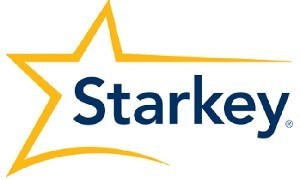
Hearing aid brands Starkey
This hearing aid brand is the only American one, as three out of the six big ones come from Denmark - their HQ is based in Minnesota, USA. They are also privately owned by the Texan billionaire, Bill Austin.
In recent years, Starkey has established itself as one of the hearing aid brands that has shown great innovation in both technology and design.
The story of Starkey began in 1963 when Harold Starkey first opened his workshop before Bill Austin bought the brand in 1967.
They are also famous for their charitable work, establishing their Starkey Hearing Foundation in 1984 to support those with hearing loss and providing over 1 million people around the world with hearing aids.

Starkey's main hearing aid technology features
- Hearing Reality: Their Livio AI hearing aid range was the first to include Hearing Reality. Your ear's answer to virtual reality and ultimate control. Hearing Reality uses ultra-fast speed and definition processing software.
This software can contain, separate and support the wearer's soundscape by concentrating the multiple layers of sound for a more natural hearing experience.
- Thrive Hearing App: When used with Starkey's Livio AI, the Thrive app gives wearers more control over their hearing aids. You can collect and store your health data and access a great range of services with your smartphone.
- Multiflex Technology: This feature is beneficial to those who suffer from tinnitus, as it supports and helps you manage conversations in front of you.
Starkey's hearing aid technology levels
1000, 1200, 1600, 2000 and 2400 being the highest specification.

Hearing aid brands Unitron
This hearing aid brand, founded in 1964, is owned by the Swiss company Sonova and is based in Canada's 'Silicon Valley' in Ontario. Sonova also owns Phonak and the majority shareholding of Boots Hearingcare.
In effect, Unitron is the cheaper alternative to Phonak hearing aids, as they are a part of the same company.
Very similar to Volkswagen and Audi. Unitron has always worked closely with health professionals and academics to better understand what hearing experience consumers want and need.
Interesting Unitron hearing aid brand facts
- Unitron won a Red Dot design award in 2017 for one of the smallest-ever wireless receiver-in-canal hearing aids, the Moxi Now.
- In 1980, they became the world's leader in behind-the-ear devices (BTE) for those who suffered from severe to profound hearing loss.
- These Canadian hearing aids can be found in over 70 countries around the world.
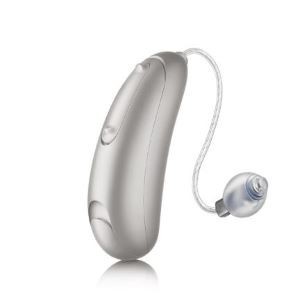
Unitron's main hearing aid technology features
- Flex Upgrade: If your hearing needs change over the course of your hearing aid, you can upgrade to a more advanced technology instead of purchasing a new hearing device for a small fee.
- Log it All: Using real-world data from your common soundscape, you can now show your audiologist your hearing experience in various environments.
They can then adapt your hearing aid settings to suit these needs so that all your hearing environments are more comfortable and clear.
Unitron's hearing aid technology levels
800, 700, 600, 500 and 9, 7, 5 and 3. The higher the number, the greater the technology.


Hearing aid brands Audio Service
Founded in 1977, the Lohne-based hearing aid brand's focus has always been on service orientation and providing innovation to its consumers. Audio Service was also the first hearing aid brand to produce custom hearing aids in Germany.
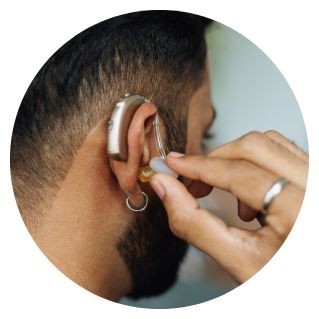
List of Hearing Aid Brands
Hearing aid brands and prices UK
As we mentioned earlier, when researching hearing aid devices, it is important to explore the comparison of hearing aid brands available in the UK.
To find out the hearing aid brands list and prices available in the UK and what we offer, please click on the hearing aid brand list links below.
- Phonak hearing aid brand price list
- Oticon hearing aids brand price list
- Resound hearing aid brand price list
- Widex hearing aid brand price list
- Signia hearing aid brand price list
- Bernafon hearing aids brand price list
- Starkey hearing aid brand price list
- Unitron hearing aid brand price list
Ratings of hearing aid brands
We always publish our hearing aid prices for all the hearing aid brands we offer, giving you complete transparency with what you actually get when you purchase your hearing aids.
You can also see what rating each hearing aid has been awarded for reference, which you might find useful.
Support and reviews on hearing aid brands
To make it easier to compare hearing aid brands' ratings, we rate all our hearing aids from one to five stars. These can be viewed throughout our price list, product pages and range pages for complete transparency.
You can also find some of the latest reviews on hearing aid brands and products within our customer reviews here
Why Choose Us?
- FREE Hearing Tests
- Best Hearing Aids and Prices
- FREE Aftercare for Life
- FREE Home Visits
- 200+ Local Audiologists
- 60 Day Money Back Guarantee
Need more support with hearing aid brands uk?
It's important to note that individual preferences, hearing needs, and the guidance of an audiologist or hearing professional should ultimately guide the selection of a hearing aid brand and model. It is advisable to consult with a hearing healthcare professional to determine the most suitable brand and device based on your specific requirements.
If you would like any more information about the best hearing aid brands we offer or if you have any other hearing healthcare enquiries - please call us free on 0800 567 7621
Hearing aid advice articles you might like...
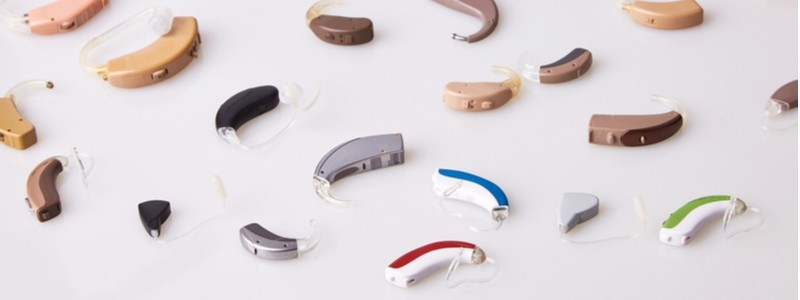 The Best Hearing Aid Providers According to Which?
The Best Hearing Aid Providers According to Which?  Hearing Aids with Directional Microphones
Hearing Aids with Directional Microphones What's included in our hearing aid prices?
Our specialist service includes:
Do not spend hundreds of pounds without getting a second opinion from us.
Please call us on 0800 567 7621
 Not only are the prices great, but the service is fantastic! Many thanks to your team.
Not only are the prices great, but the service is fantastic! Many thanks to your team.Why choose Hearing Aid UK to help you find the best hearing aids for you?
Other pages you might find useful
Common FAQs when researching hearing aids and hearing loss
In general, any audiologist will always recommend to you the hearing aid model that best suits your needs. Here is a useful checklist to make sure that is the case.
- Audiologist's level of knowledge: The audiologist you have seen will hopefully have a wide knowledge of all available hearing aids; however, some will only be familiar with a small number of brands and, therefore, may not really be in a position to know which model is the best for you. It is OK to challenge their recommendation and ask them to justify why this particular brand is the one for you.
- Do research: Read about the hearing aid that was recommended. Does it seem like it will suit your lifestyle? Does it have more or fewer features than you need?
- Be aware of sales targets: Many high street retailers have specific tie-ins to a particular manufacturer/brand. The hearing aid they have suggested may still be the correct one for you, but do your research so that you know why they might have recommended it.
If you have significant hearing loss in both ears, you should be wearing two hearing aids. Here are the audiological reasons why:
Localisation: The brain decodes information from both ears and compares and contrasts them. By analysing the minuscule time delays as well as the difference in the loudness of each sound reaching the ears, the person is able to accurately locate a sound source.
Simply put, if you have better hearing on one side than the other, you can't accurately tell what direction sounds are coming from.
Less amplification is required: A phenomenon known as “binaural summation” means that the hearing aids can be set at a lower and more natural volume setting than if you wore only one hearing aid.
Head shadow effect: High frequencies, the part of your hearing that gives clarity and meaning to speech sounds, cannot bend around your head. Only low frequencies can. Therefore, if someone is talking on your unaided side, you are likely to hear that they are speaking, but be unable to tell what they have said.
Noise reduction: The brain has its own built-in noise reduction, which is only really effective when it is receiving information from both ears. If only one ear is aided, even with the best hearing aid in the world, it will be difficult for you to hear in background noise as your brain is trying to retain all of the sounds (including background noise) rather than filtering them out.
Sound quality: We are designed to hear in stereo. Only hearing from one side sounds a lot less natural to us.
Fancy some further reading on this topic? You can read about why two hearing aids are better than one in our article, hearing aids for Both Ears, here
For most people, the main benefit of a rechargeable hearing aid is simple convenience. We are used to plugging in our phones and other devices overnight for them to charge up. Here are some other pros and cons:
For anybody with poor dexterity or issues with their fingers, having a rechargeable aid makes a huge difference, as normal hearing aid batteries are quite small and some people find them fiddly to change.
One downside is that if you forget to charge your hearing aid, then it is a problem that can't be instantly fixed. For most, a 30-minute charge will get you at least two or three hours of hearing, but if you are the type of person who is likely to forget to plug them in regularly, then you're probably better off with standard batteries.
Rechargeable aids are also a little bit bigger and are only available in Behind-the-Ear models.
Finally, just like with a mobile phone, the amount of charge you get on day one is not going to be the same as you get a few years down the line. Be sure to ask what the policy is with the manufacturer's warranty when it comes to replacing the battery.
For most people, the answer is yes. But it's never that simple.
The majority of hearing problems affect the high frequencies a lot more than the low ones. Therefore, open fitting hearing aids sound a lot more natural and ones that block your ears up can make your own voice sound like you are talking with your head in a bucket. Therefore, in-ear aids tend to be less natural.
However, the true answer is we can't tell until we have had a look in your ears to assess the size of your ear canal, and until we have tested your hearing to see which frequencies are being affected.
People with wider ear canals tend to have more flexibility, also there are open fitting modular CIC hearing aids now that do not block your ears.
There is also the age-old rule to consider, that a hearing aid will not help you if it's sat in the drawer gathering dust. If the only hearing aid you would be happy wearing is one that people can't see, then that's what you should get.
Most people can adapt to any type of hearing aid, as long as they know what to expect. Have an honest conversation with your audiologist as to what your needs are.
Generally speaking, six or more. Unless it's none at all. The number of channels a hearing aid has is often a simplistic way an audiologist will use to explain why one hearing aid is better than another, but channels are complex, and it is really not that straightforward. Here are some reasons why:
Hearing aids amplify sounds of different frequencies by different amounts. Most people have lost more high frequencies than low, and therefore need more amplification in the high frequencies. The range of sounds you hear is split into frequency bands or channels, and the hearing aids are set to provide the right amount of hearing at each frequency level.
Less than six channels, and this cannot be done with much accuracy, so six is the magic number. However, a six-channel aid is typically very basic with few other features and is suitable only for hearing a single speaker in a quiet room. The number of channels is not what you should be looking at; it's more the rest of the technology that comes with them.
As a final note, different manufacturers have different approaches. One method is not necessarily better than any other. For example, some manufacturers have as many as 64 channels in their top aids. Most tend to have between 17 and 20. One manufacturer has no channels at all.
Manufacturer's warranties typically last between 2-5 years, depending on the brand and model, and cover defects in materials and workmanship. This includes repairs for component failures, electronic malfunctions, and manufacturing defects, but excludes damage from misuse, accidents, or normal wear. Most manufacturers also include loss and damage insurance for the first year.
We handle all warranty claims on your behalf, liaising with manufacturers and ensuring you get replacement devices quickly when needed. This comprehensive warranty coverage, combined with our lifetime aftercare, gives you complete peace of mind.
Our hearing tests are completely free, whether at our clinics or in your home. Unlike other providers who charge £30-£100 for home visits, we believe hearing healthcare should be accessible without financial barriers. Our comprehensive assessments include examination by a registered audiologist, audiogram results, and personalised recommendations.
All testing, future adjustments, and ongoing support are included at no extra cost. While NHS tests are also free, typical 6-week waiting periods often lead people to seek immediate private testing. We provide prompt, professional assessments that fit your schedule and budget.
Yes, we offer completely free home visits throughout the UK, and this service is included in our prices with no additional charges. Home visits are particularly valuable for people with mobility issues, busy schedules, or those who simply prefer the comfort and convenience of their own environment.
Our audiologists can conduct full hearing tests, fit hearing aids, and provide ongoing support in your home. This service sets us apart from many providers who either don't offer home visits or charge extra for them.
We can offer prices up to 40% lower than high street retailers because of our business model. As a network of 200+ independent audiologists, we don't have the massive overheads of large retail chains - no expensive high street premises, no sales targets pushing audiologists to sell the most expensive options, and no costly marketing campaigns.
However, we maintain the same buying power as the big chains because we purchase on behalf of our entire nationwide network. This means you get access to the same premium hearing aids with professional service, but at genuinely competitive prices.
We offer a comprehensive 60-day money-back guarantee, which gives you twice the industry standard time to properly assess whether your hearing aids are right for you. This extended period recognises that adjusting to hearing aids takes time, and your brain needs several weeks to adapt to the amplified sounds.
Unlike many providers who offer just 30 days, we believe 60 days gives you the confidence to test your hearing aids in all the situations that matter to you - from quiet conversations at home to busy restaurants and outdoor activities.
Ask the Experts
6 Morton Lane
Walkwood
Redditch
Worcestershire
B97 5QA
Latest Launch
When we refer to a product as 'Latest Launch', we mean it is the latest to be released on the market.
New
When we refer to a product as 'New', we mean that the product is the newest hearing aid model on the market.
When we refer to a product as 'Superseded', we mean that there is a newer range available which replaces and improves on this product.
Older Model
When we refer to a product as an 'Older Model', we mean that it is has been superseded by at least two more recent hearing aid ranges.
